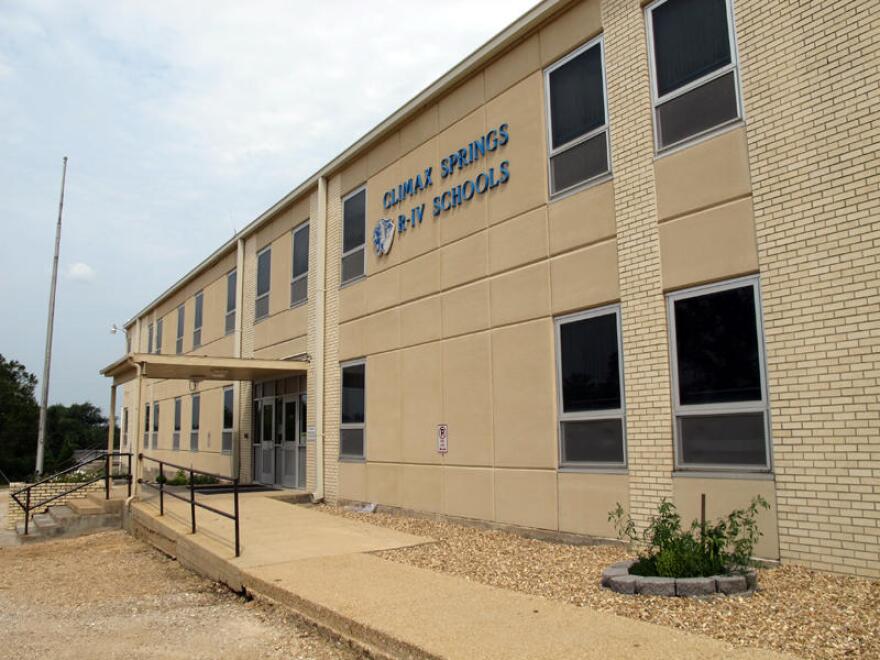As the school year begins we're hearing a lot about accreditation, Common Core and teacher tenure. All important, but the issue that may worry educators the most is security. School officials spend a lot of time thinking about it and a huge amount of money trying to improve it.
Right now, about a third of all states allow teachers or staff with a conceal and carry permit to pack a gun in school as long as they have permission from the school board. Nowhere in America right now is the issue of armed teachers more complicated than in Missouri.
Last month Gov. Jay Nixon, a Democrat, vetoed legislation (Senate Bill 656) that would have allowed districts to designate “school protection officers” who would get special firearms training to carry a concealed weapon in the classroom.
"Arming teachers will not make our schools safer," Nixon said in his veto message. "I have supported and will continue to support the use of duly authorized law enforcement officers employed as school resource officers, but I cannot condone putting firearms in the hands of educators who should be focused on teaching our kids."
But that hasn’t stopped a dozen school districts in Missouri, mostly in rural areas around the Ozarks, from training teachers and arming them for the start of school.
“If you can’t shoot you can’t make it through this program,” says Dan Wehmer who is executive vice president of Shield Solutions in West Plains, Mo. “I’ll stack up my educators against almost any cop; local, county or state.”
Shield Solutions was formed specifically to train teachers to shoot in schools. In Missouri, someone only needs eight hours of training to get a conceal and carry permit. Shield Solutions provides 40 hours of training, mostly on the range.
Wehmer says 34 teachers so far have graduated from the program after training that includes shooting at moving targets and learning how to maneuver through a school in a combat situation. They also have to qualify three times a year and get an additional 24 hours of training yearly.
Still, Professor John Rury from the University of Kansas education school is dubious.
"Well, carrying a gun and using a gun are two different things ... there’s a lot of evidence that, you know, people who don’t regularly train in the use of firearms don’t use them very effectively."
The minimum firearms training for police cadets in Missouri is 66 hours with four hours of additional training every three years, although some metropolitan departments double or even triple that training. But here’s how it’s all legal for the districts. The trained teachers automatically become Shield Solution employees if an active shooter enters the school.
“They don’t deal with hacked off parents or school bullies. Only active shooters,” says Wehmer.
One of those districts who will have Shield Solution trained teachers this year is tiny Climax Springs where there are 250 students in the entire district. The town was once a thriving little resort where visitors came to enjoy the natural spring water. Now the old main street is a ghost town. And it is a long ways away from the nearest cop.
“So if we ever had any kind of catastrophe, armed intruder of anything like that, we are looking at a significant time lapse between the time they get the phone call and them getting here,” says Nathan Barb who is just starting his second year as a superintendent.
The contract between Climax Springs and Shield Solutions and it spells out all the training and the additional liability insurance the company will provide. What it doesn’t have is exactly how much it’s going to cost. The district will not reveal who was trained or even how many educators were trained. All the contract says is that two trained employees costs the district $17,500 a year and that goes up $6,000 for each additional employee.
Missouri National Education Association President Charles Smith says the money should go elsewhere.
“We’re there to educate the children. That’s our job and not to carry pistols or carry guns when we have someone who’s trained to take care of our children, take care of our employees,” says Smith.
Tom Phillips, security head at Blue Springs School District in suburban Kansas City says while armed teachers may work for rural districts, it’s a bad idea for urban and suburban districts.
"Within two or three minutes there’s going to be 15, 20 cops on the scene and we don’t want a civilian walking around in the hallways with a handgun because it’s not going to end well,” Phillips says.
Even though Superintendent Barb is going to have teachers with concealed guns in his schools this year, he’s still cautious.
“What the scary side of this is, is that there are boards and administrations that are giving people permission to carry on campus without the training,” says Barb.
In both states all an educator needs is a conceal and carry permit and an okay from the board of education to carry a gun in the classroom. Barb won’t say who or how many teachers are armed. It’s all part of a security plan, he says, designed to make it harder for a gunman to plan an attack.




